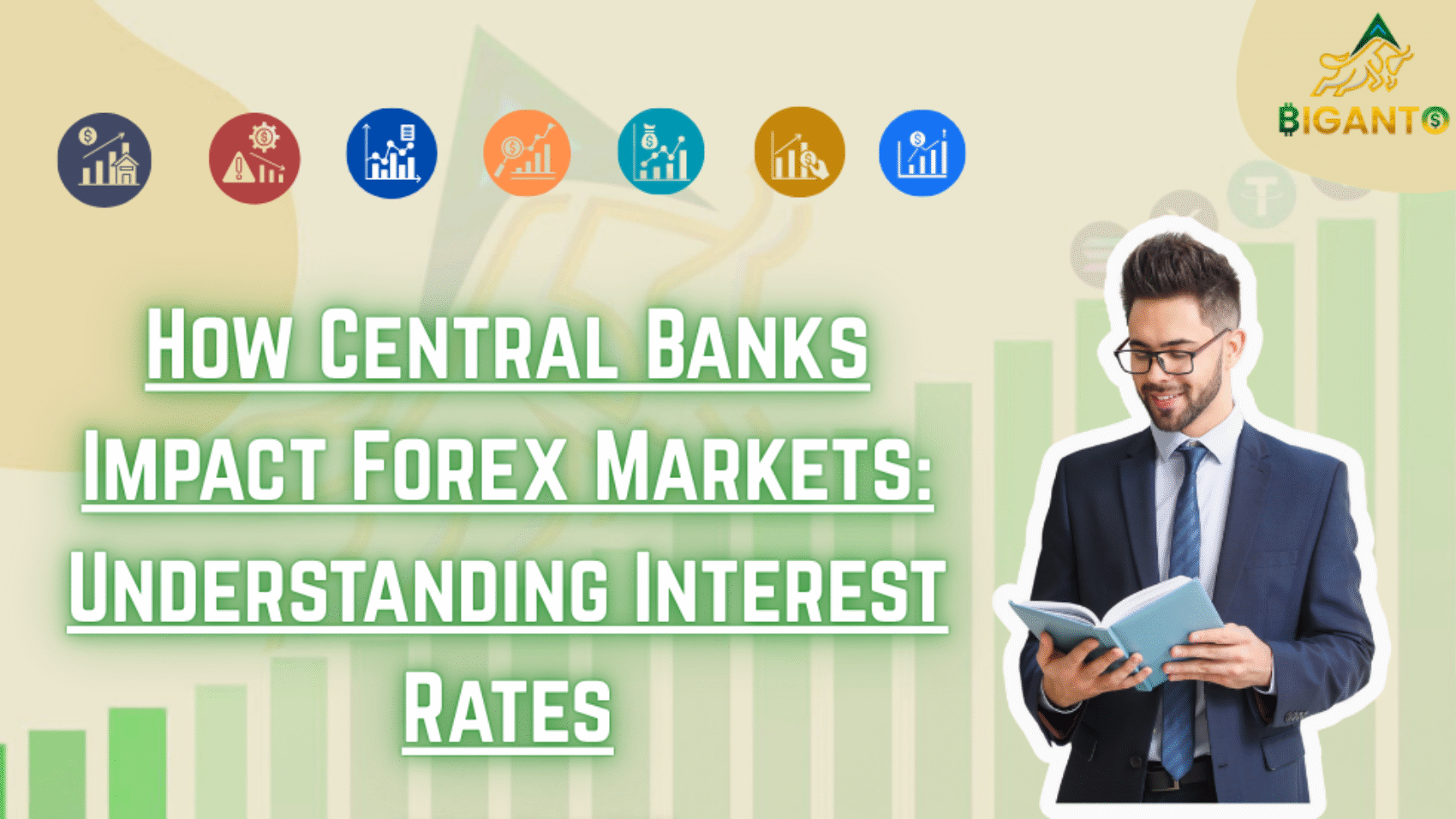Central banks are crucial players in the world of finance, and their decisions significantly impact the foreign exchange (forex) markets. One of the primary ways they influence currency values is through interest rates. Understanding this relationship is key to grasping how forex markets operate and why currencies fluctuate the way they do.
What’s a Central Bank?
A central bank is the organization with primary responsibility for its nation’s economic prosperity, monetary policy, financial system health, and the stability of its currency.
What are Interest Rates?
Interest rates are the cost of borrowing money, and they play a critical role in a country’s economy. Central banks set interest rates to control inflation, stimulate economic growth, and maintain financial stability. When interest rates are high, borrowing becomes more expensive, and people are less likely to take out loans. Conversely, when interest rates are low, borrowing becomes cheaper, and people are more likely to take out loans.
The Relationship Between Interest Rates and Forex Markets
The forex market is the global marketplace where currencies are bought and sold. Currency values are largely influenced by various factors, and one of the most significant is interest rates. Let’s break down how central bank interest rates affect forex markets:
1. Interest Rate Differentials
The difference in interest rates between two countries has a significant impact on their currencies. When a central bank raises or lowers interest rates, it creates a differential between the target rates of different currencies. Traders often flock to currencies that offer higher interest rates because these provide better returns on investments, making them more attractive.
For example, if the Federal Reserve raises interest rates while the European Central Bank keeps rates the same, investors will likely move money into U.S. dollars to take advantage of higher returns. As a result, the U.S. dollar appreciates relative to the euro. This concept is known as the interest rate differential.
2. Inflation Control and Currency Strength
Central banks often adjust interest rates as part of their strategy to control inflation. Higher interest rates are used to cool off an overheating economy and control inflation, while lower rates are aimed at stimulating economic activity during periods of low inflation or recession.
When a central bank raises rates, it signals that the economy is stable and inflation is under control. A country with low inflation and a healthy economy typically has a stronger currency because its purchasing power remains relatively high. Conversely, lower interest rates may signal economic weakness, leading to a depreciation of the currency.
3. Market Expectations and Central Bank Guidance
Forex markets are highly sensitive to expectations. Traders and investors often speculate on what central banks will do next, adjusting their positions based on projected interest rate changes. For example, if traders expect that the Federal Reserve will hike rates soon, they may begin buying U.S. dollars in anticipation of a future rise in the currency’s value.
Central banks also provide guidance on their future actions through forward guidance. This is when a central bank communicates its future intentions about interest rates. If a central bank signals that it is likely to raise rates in the near future, the market may respond by buying the currency even before the actual rate hike occurs.
How Traders Use Interest Rate Decisions
Forex traders closely monitor central bank announcements, economic data, and interest rate decisions to make informed trading decisions. Here’s how traders typically use this information:
- Pre-emptive Moves: Traders try to anticipate central bank decisions before they happen. If they believe a rate hike is imminent, they may buy the currency in advance, driving up its value.
- Post-Announcement Reactions: Once a central bank makes an announcement, traders react to the news based on whether it meets, exceeds, or falls short of expectations. For example, if a central bank unexpectedly cuts rates, the currency may fall in value, as investors reassess its attractiveness.
- Interest Rate Forecasts: Analysts and traders often look at economic indicators, such as inflation, GDP growth, and employment data, to predict central bank moves. If the data suggests that inflation is rising and the central bank may raise rates, the currency may appreciate in anticipation.
Conclusion
Central banks play a crucial role in shaping Forex markets through interest rates. Understanding how interest rates impact currency values is essential for traders to navigate these markets. The decisions they make about interest rates influence investment flows, currency values, and market sentiment. Forex traders pay close attention to central bank meetings and announcements, as interest rate changes or guidance can lead to major currency fluctuations.

